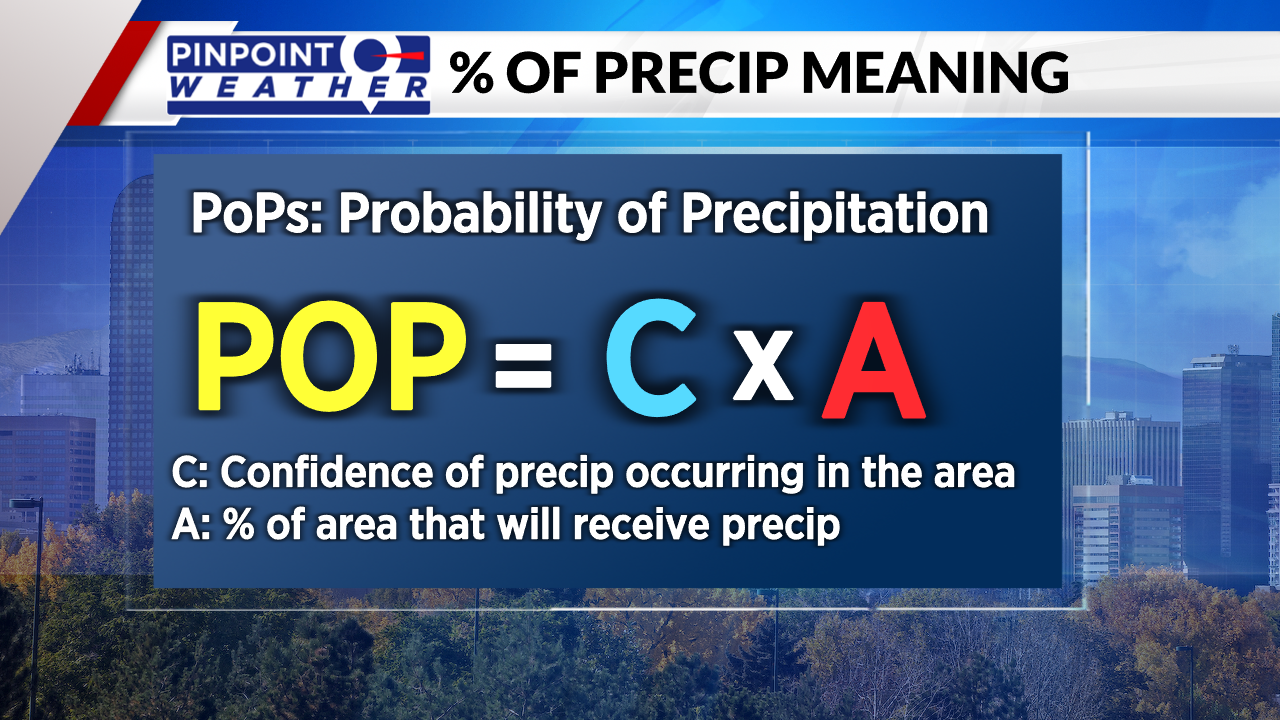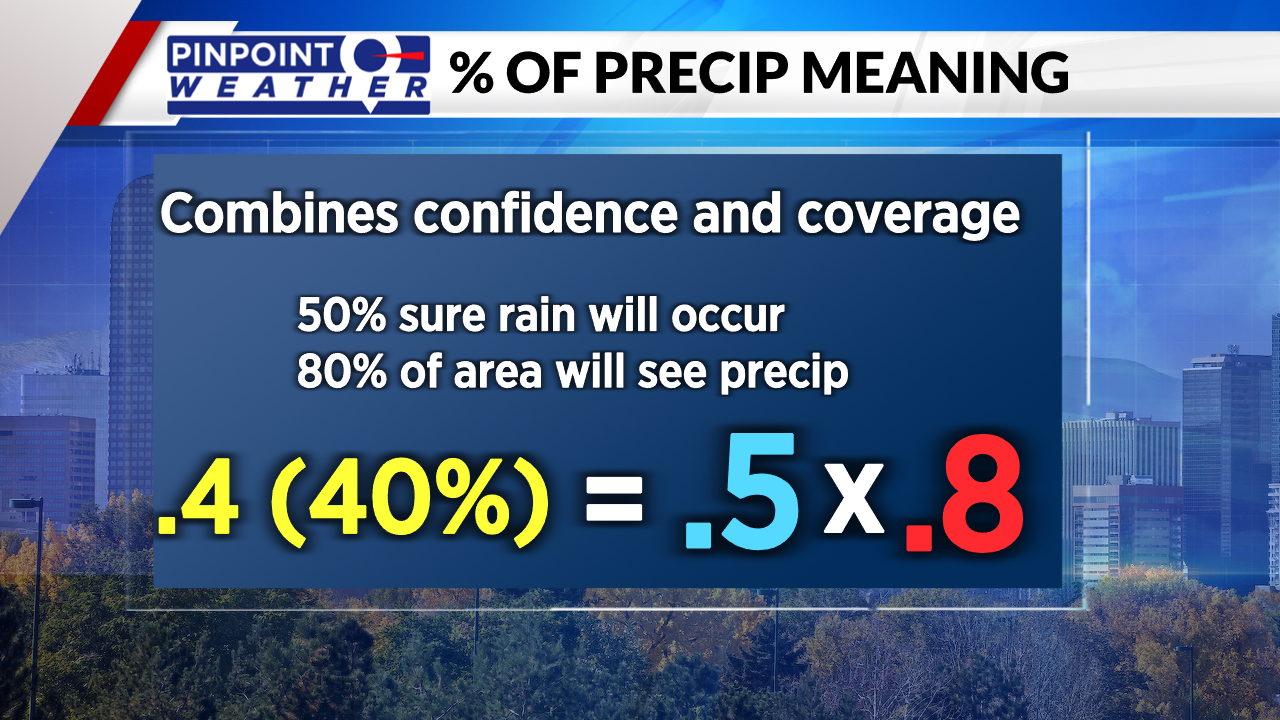DENVER (KDVR) — You have likely watched the news and seen the meteorologist show a percent chance of precipitation on the seven-day forecast. But what does that actually mean?
Most people assume that it means there’s that percentage of a chance that it will rain in your area. That is partially correct, but there is a little more that goes into it.
Meteorologists use what we call “PoP,” or the probability of precipitation, to figure this out for any given day, time or area.

The graphic above shows that the probability of precipitation is equal to C times A. C is the amount of confidence the meteorologist has in precipitation occurring in the viewing area. A is the percentage of the area that will receive precipitation.
Both C and A are based on a forecast from the meteorologist.

Let’s look at the example above. If we are 50% sure that rain will occur in, let’s say, metro Denver and we think 80% of that area will see precipitation, then we plug those into the equation PoP = C x A.
You start by moving the decimal two spots to the left for each percentage. You then multiply the two together and convert the answer back into percent form from the decimal. In this case, 0.5 times 0.8 is equal to 0.4, or 40%.
This is how we would establish that there is a 40% chance of precipitation in metro Denver.

